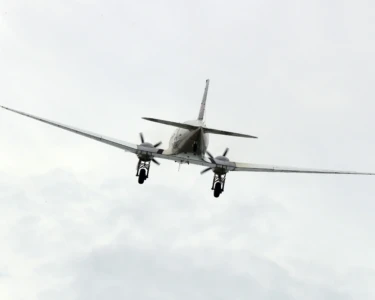In the vast expanse of the skies, where precision and accuracy are paramount, aeronautical navigation relies on a complex web of data and standards to ensure safe and efficient travel.
At the heart of this intricate network lies ARINC 424, a foundational standard that has evolved over decades to become the backbone of modern aviation navigation.
ARINC 424, developed by the Aeronautical Radio, Incorporated (ARINC) organization, represents a milestone in the history of aviation.
Born out of the need for standardized navigation data, its journey from inception to its current iteration is a testament to the relentless pursuit of excellence in the aviation industry.
This blog aims to trace the evolutionary path of ARINC 424, from its humble beginnings to its ubiquitous presence in contemporary aviation.
We will delve into its origins, explore its progression through various versions, examine its integration into modern avionics systems, and ponder its future trajectory amidst the ever-changing landscape of aviation technology.
Join us as we embark on a journey through time and innovation, unraveling the story of ARINC 424 and its enduring impact on the world above the clouds.

Origins of ARINC 424
Historical Context: Emergence of the Need for Standardized Navigation Data
The origins of ARINC 424 can be traced back to the mid-20th century when the aviation industry experienced exponential growth and faced the challenge of managing increasingly complex air traffic.
Prior to the standardization of navigation data, flight crews relied on a patchwork of disparate charts, maps, and documents, leading to inconsistencies, inefficiencies, and, in some cases, safety concerns.
As air travel expanded globally, especially with the rise of commercial aviation, it became evident that a standardized approach to aeronautical navigation data was essential for ensuring the safety and efficiency of air transportation.
Pilots, air traffic controllers, and aviation authorities called for a unified system that would provide accurate, reliable, and consistent information across all phases of flight.
Creation of the ARINC Organization and its Role in Aviation Standards
In response to this growing demand, the Aeronautical Radio, Incorporated (ARINC) organization was founded in 1929.
Initially established to provide radio communications services for the aviation industry, ARINC quickly expanded its scope to include the development of standards and protocols for various aspects of aviation technology.
ARINC’s role in shaping aviation standards became particularly prominent in the post-World War II era, as the industry grappled with the challenges of modernization and standardization.
Recognizing the need for a common framework for navigation data, ARINC embarked on the ambitious task of developing what would eventually become known as ARINC 424.
Early Development Stages of ARINC 424: Goals and Objectives
The development of ARINC 424 began in the 1960s, with ARINC collaborating closely with industry stakeholders, including airlines, aircraft manufacturers, regulatory agencies, and navigation equipment suppliers.
The primary goal was to create a comprehensive standard that would encompass all aspects of aeronautical navigation, including route planning, waypoint definition, instrument approach procedures, and airport data.
Key objectives during the early stages of development included:
- Establishing a common format for encoding navigation data to facilitate interoperability among different avionics systems.
- Ensuring accuracy and consistency of data representation to minimize errors and enhance flight safety.
- Providing flexibility for future expansion and adaptation to evolving technology and operational requirements.
Evolution and Enhancements
Introduction of Subsequent Versions: ARINC 424-2, -3, -4, etc.
Building upon the success of ARINC 424 Version 1, subsequent versions were introduced to address emerging needs, incorporate technological advancements, and respond to feedback from industry stakeholders.
Each new iteration of ARINC 424 brought enhancements and refinements aimed at improving usability, accuracy, and compatibility with evolving avionics systems.
The transition from Version 1 to subsequent versions marked significant milestones in the evolution of ARINC 424.
ARINC worked closely with industry partners to identify areas for improvement and to ensure backward compatibility with existing systems while accommodating new features and functionalities.
Major Advancements and Improvements with Each Version
With each new version of ARINC 424, a range of enhancements and improvements were introduced to address specific challenges and to align with evolving industry standards and practices.
These advancements encompassed various aspects of navigation data, including route planning, waypoint definition, instrument approach procedures, and airport data.
Some of the major advancements and improvements introduced in subsequent versions of ARINC 424 include:
- Expanded data coverage: Increasing the scope of navigation data to include additional waypoints, airways, instrument procedures, and airport information to support a wider range of flight operations.
- Enhanced data encoding: Improving the encoding format to accommodate new data types, improve data integrity, and facilitate more efficient data exchange between different avionics systems.
- Standardization of data fields: Establishing standardized formats and conventions for representing navigation data elements to ensure consistency and interoperability across different systems and platforms.
- Integration of new technologies: Incorporating advancements in navigation technology, such as GPS and satellite-based augmentation systems, to enhance navigation accuracy and reliability.
- Streamlined data management: Introducing tools and processes for managing and updating navigation databases more efficiently, including data validation, distribution, and revision control mechanisms.
Collaboration and Feedback from Aviation Stakeholders in Refining the Standard
The evolution of ARINC 424 was driven by a collaborative effort involving a diverse range of stakeholders within the aviation industry.
ARINC worked closely with airlines, aircraft manufacturers, avionics suppliers, regulatory agencies, and other relevant parties to gather feedback, solicit input, and address specific requirements and concerns.
This collaborative approach ensured that ARINC 424 remained relevant and responsive to the needs of the aviation community, while also fostering a sense of ownership and commitment among stakeholders.
By actively engaging with end-users and incorporating their feedback into the standard development process, ARINC was able to produce a robust and widely accepted framework for aeronautical navigation data.
Modern Applications
Current Status of ARINC 424: Latest Version and Updates
ARINC 424 continues to serve as the preeminent standard for aeronautical navigation data, with the latest version incorporating state-of-the-art features and enhancements to meet the evolving needs of the aviation industry.
The standard is regularly updated to reflect advancements in technology, changes in regulatory requirements, and feedback from users, ensuring that it remains relevant and effective in today’s aviation landscape.
Diverse Applications in Modern Aviation: Commercial, Military, and General Aviation

The applications of ARINC 424 extend across various sectors of aviation, including commercial airlines, military operations, and general aviation.
In the commercial aviation sector, ARINC 424 is integral to the operation of modern flight management systems (FMS), which rely on accurate and up-to-date navigation data to plan and execute flights safely and efficiently.
Military aviation also relies heavily on ARINC 424 for mission planning, navigation, and tactical operations. The standard’s flexibility and versatility make it well-suited for a wide range of military applications, including combat missions, aerial refueling, and reconnaissance.
In the general aviation sector, ARINC 424 provides pilots with essential navigation information for planning and executing flights in small aircraft, helicopters, and other non-commercial vehicles.
The standard’s widespread adoption and compatibility with avionics systems from various manufacturers make it accessible to pilots of all levels of experience.
Role of ARINC 424 in Enhancing Navigation Accuracy, Efficiency, and Safety
ARINC 424 plays a crucial role in enhancing navigation accuracy, efficiency, and safety across all sectors of aviation.
By providing standardized navigation data that is accurate, reliable, and consistent, the standard enables pilots and air traffic controllers to navigate airspace with confidence and precision.
One of the key benefits of ARINC 424 is its ability to support advanced navigation capabilities, such as performance-based navigation (PBN) and required navigation performance (RNP), which enable more precise and flexible routing, especially in congested airspace or adverse weather conditions.
Additionally, ARINC 424 facilitates seamless integration with other avionics systems, such as GPS, inertial navigation systems (INS), and terrain awareness and warning systems (TAWS), further enhancing situational awareness and mitigating the risk of navigation errors.
Conclusion
As we conclude our exploration of the evolution of ARINC 424, it becomes clear that this standard has played a pivotal role in shaping the modern aviation industry.
From its humble beginnings to its current status as a cornerstone of aeronautical navigation, ARINC 424 has undergone a remarkable journey of innovation and adaptation.
Throughout its evolution, ARINC 424 has demonstrated a remarkable capacity to evolve and adapt to the changing needs of the aviation community.
With each new version and update, the standard has incorporated advancements in technology, responded to feedback from users, and remained at the forefront of navigation data standards.
Looking to the future, ARINC 424 is poised to continue its legacy of excellence, as the aviation industry embraces new technologies and approaches to navigation.
From the integration of satellite-based navigation systems to the development of next-generation flight management systems, ARINC 424 will remain a vital component of the aviation ecosystem, ensuring safe, efficient, and reliable air travel for generations to come.
As we reflect on the evolution of ARINC 424, we are reminded of the collaborative spirit and innovative mindset that have propelled the aviation industry forward.
By working together to develop and refine standards like ARINC 424, we can continue to push the boundaries of what is possible in aviation, driving progress and innovation for years to come.
In closing, let us celebrate the legacy of ARINC 424 and look forward to the bright future it holds for aviation navigation.
As we soar into the skies of tomorrow, let us do so with confidence, knowing that ARINC 424 will be there to guide us every step of the way.






